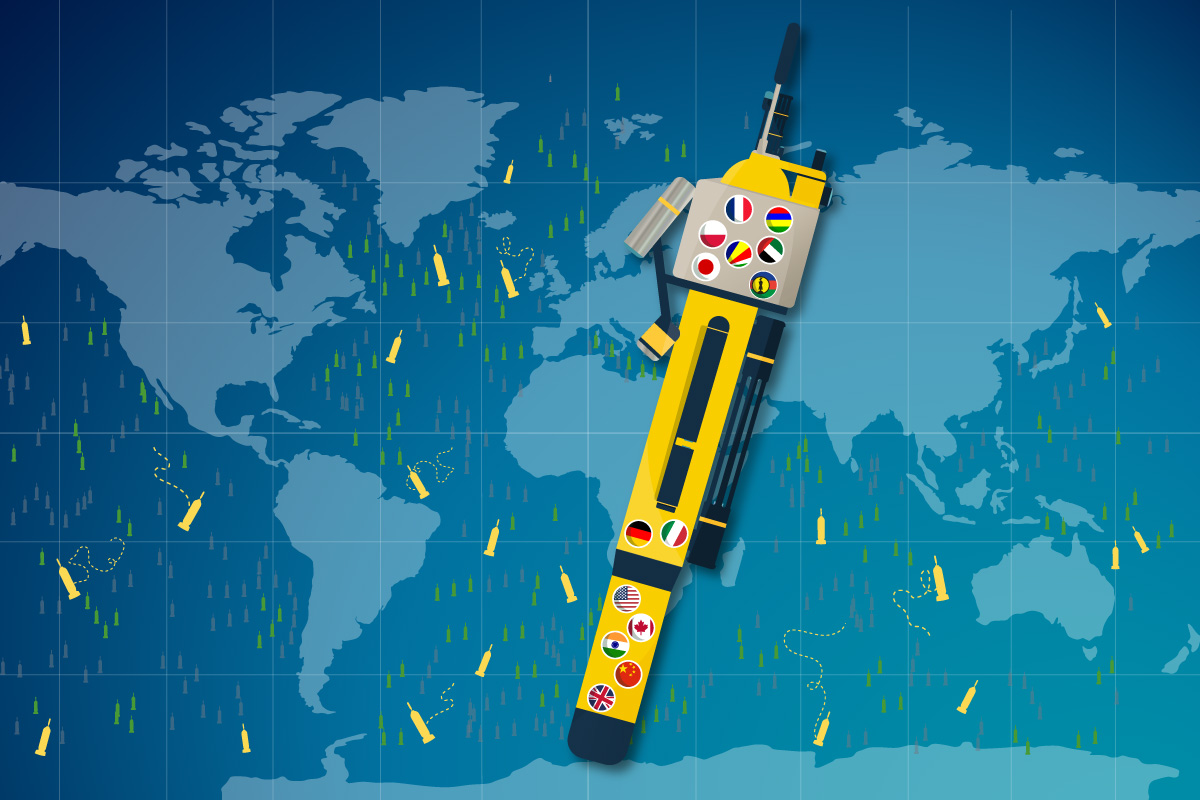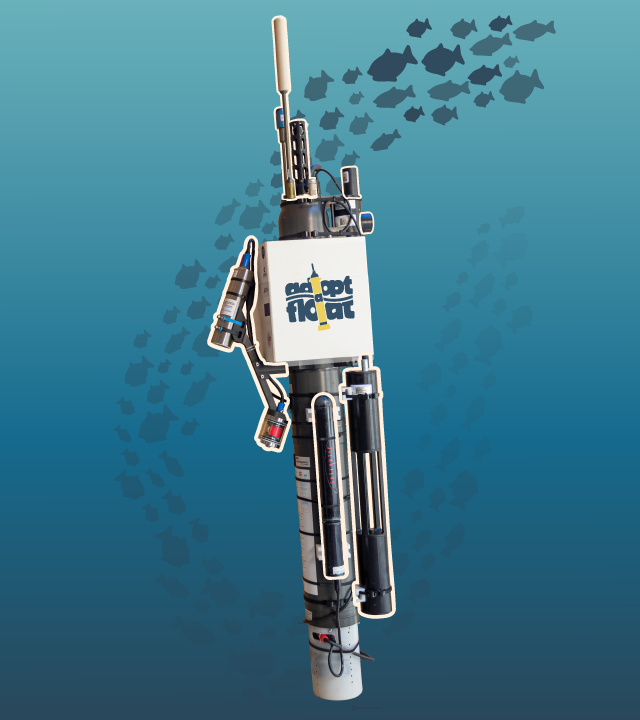adopt a float in brief
adopt a float is a multidisciplinary educational program that offers students the opportunity to discover the global ocean and how crucial its study is to better understand and protect it.
Within the “Ocean decade” (United Nations Decade of Ocean Science for Sustainable Development, 2021-2030), and in line with the Ocean Literacy movement, adopt a float offers students and their teachers from primary and secondary school levels of all countries around the world a scientific, cultural and civic approach to the ocean.
Adopt a profiling float, join the Ocean Voyagers community and embark on a scientific adventure throughout the school year: monitoring of the float and its data, meetings and exchanges with scientists, wrap-up sessions…


Explore
adopt a float adopt a float aims to make young people explore the global ocean and raise awareness on Ocean issues. It intends to bring ocean sciences into the classrooms and educate about the Ocean and its protection.
Share
adopt a float aims to connect ocean scientists with the educational world. The program also promotes exchanges between schools around the world.
Inclusive
adopt a float welcomes classes of all school levels with various backgrounds!
Together
The adopt a float team will guide you throughout this scientific and educational adventure.
The Profiling Float

GPS & IRIDIUM ANTENNA
It provides the position of profiling floats in the Ocean and transmits their measurements.
Measuring the oxygen concentration provides information on the pathway and the age of a water mass in the Ocean. It can also be used to identify regions with low O2 content (the so-called Oxygen Minimum Zones, OMZs) where marine life is in danger.
SALINITY, TEMPERATURE AND PRESSURE SENSOR
Measuring temperature and salinity helps to identify the origin of waters and to understand currents and ocean circulation. The pressure sensor provides information about the depth at which all measurements were taken.
IRRADIANCE SENSOR
Measuring light levels helps to identify areas that are favourable for phytoplankton development.
PH SENSOR
Measuring pH helps scientists to monitor the phenomenon of ocean acidification.
CHLOROPHYLL a AND PARTICLE SENSOR
These measurements provide information on phytoplankton biomass.
UNDERWATER CAMERA
It observes and quantifies zooplankton, large phytoplankton and particles larger than 100 µm in a given volume of water.
NITRATE SENSOR
Measuring nitrates helps to identify areas that are favourable for phytoplankton development.
PARTICLES SENSOR (TRANSMISSIOMETER)
Measuring the concentration of particles (e.g. detritus) suspended in water provides oceanographers with information on carbon flux in the Ocean.
Intended to help to answer urging questions of oceanographers, the profiling float is a flagship robot of an international observation program of the Ocean. Today, there are several thousand of them deployed in the global ocean.
Equipped with miniaturized sensors and linked to a database fed in real time, profiling floats provide measurements of various physical (e.g. temperature), biological (e.g. oxygen) and chemical (e.g. pH) parameters between the Ocean surface and 2000 meters depth.
They are deployed from oceanographic vessels and voyage for several years. The profiling floats drift with the deep currents, yo-yo regularly within the water and when they ascend towards the surface, they take measures. Once back at surface, the collected data are transmitted by satellite and accessible in real time on an interactive map that scientists & classrooms share in use.
With these underwater robots, the adopt a float program undertakes a scientific outreach approach and works with schools. Thus, thanks to adopt a float, these robots, which are great scientific tools, also become modern and attractive teaching tools!
The school year
adopt a float operates during the French school year, i.e. between September and June.
Before school start
In order to actively participate, registration is mandatory and takes place during the summer months. After filling an application form (July), the selected classes receive notification before the start of the school year (August). There is no financial cost associated to participation.
The school year then is rhythmed by different steps and events that animate the program in the classrooms:
At school start
At the beginning of the school year, sign up and adopt your profiling float: design a logo and give it a name! You can choose the float on its geographical area in the global ocean that particularly interests you. But you may also leave it to the team to choose for you!
Within the course of the school year
During the school year, live the adopt a float adventure in two complementary ways:
* Self-directed:
Use the interactive map, follow your float’s journey and become familiar with the scientific data it measures. Also use the educational resources provided!
* Accompanied:
– Meet and talk with scientific research professionals during classroom sessions, taking place either in class or remotely, and (re)discover the Ocean through different topics.
– Be in contact with the adopt a float team for questions, follow-ups… Moreover, teachers and classes can have a science mentor with whom they exchange during the year! And, our science outreach and education officers will be regularly in touch with you for advice and news!
– Every month, the adopt a float team also invites teachers (registered or not in the adopt a float program) to additional training opportunities to strengthen their ocean literacy and provide educational resources.
End of the school year
The adopt a float school year concludes with wrap-up sessions. During these, the Ocean Voyagers meet other participating classes, and present their final productions to them and the adopt a float team!